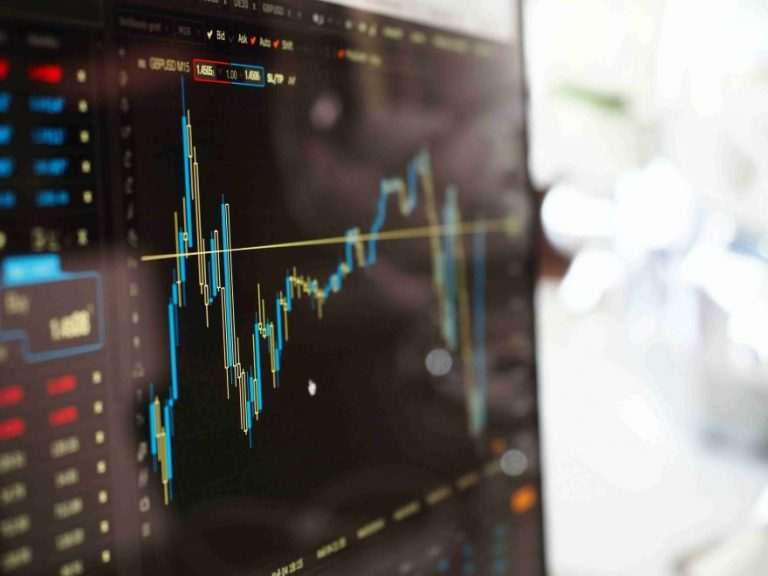Il Chiaro Finanziario’s Weekly Brief: August 17 – 23, 2025
Table of contents
Crucial Turning Point: Fed Rates and Markets – August 23, 2025
This has been a week of exceptional financial dynamics, where central bank policy, mixed economic data, and corporate news have driven global markets. Investor sentiment was a mix of euphoria and caution: on one hand, optimism for potential rate cuts pushed indices to new records; on the other, geopolitical uncertainties kept investors on high alert.
Powell Jackson Hole Speech: A Multi-Front Rally and Fed Optimism
Global stock indices posted a solid week, driven by Federal Reserve Chairman Jerome Powell’s address at the Jackson Hole symposium. His speech, marked by a cautious openness to a possible rate cut as early as September, immediately boosted markets.
This Week’s Data The German defense manufacturer Rheinmetall saw its stock gain over 1,500% since February 2022, making it one of the best-performing stocks globally, spurred by rising defense spending in Europe.
Here’s a look at the performance of the main indices:
| Index | Weekly Change | 1-Year Return |
| Hang Seng | +0.9% | +43.9% |
| DAX | +0.3% | +30.8% |
| NASDAQ Composite | +1.9% | +20.2% |
| S&P 500 | +1.5% | +14.8% |
| FTSE 100 | +0.1% | +11.9% |
On Wall Street, the NASDAQ Composite hit a new all-time high at 21,496.54 points, while the Dow Jones closed at a record level of 45,631.74. The S&P 500 also rose to 6,466.91, just shy of its all-time high. Futures markets are now fully pricing in a quarter-point reduction at the September meeting, with analysts like Barclays predicting a total of two cuts by the end of the year.
In Europe, markets held up well, with the German DAX climbing to 24,363.09 and the French CAC 40 reaching 7,969.69. The FTSE 100 maintained a strong position at 9,321.40.
Beyond the Week: A Look at Macroeconomic Sentiment
To better understand the situation, it’s essential to look beyond the individual numbers and analyze the sentiment driving the economy. Powell’s speech maintained a cautious tone, but the VIX, the volatility index, remained relatively low, reflecting an apparent calm and investor confidence in a monetary policy-driven recovery. However, economic data presents a more complex picture.
The Purchasing Managers’ Index (PMI), a key indicator for manufacturing and service sector activity, signaled a contraction in the German economy, indicating that the slowdown is taking hold in the Eurozone’s largest economy. Similarly, consumer confidence, while not explicitly mentioned, is a crucial factor to monitor: a drop in confidence could lead to decreased spending and a further slowdown in growth.
The combination of a low VIX and a contracting PMI suggests that the market is optimistic about the Fed’s response but is either ignoring or discounting the underlying signals of economic weakness.
Between Geopolitics and Strategic Corporate News
The week was not defined solely by monetary policy but also by important corporate announcements and geopolitical developments.
- Tech Sector Breakthrough: Speculation about a potential partnership between Apple and Google to revamp the Siri voice assistant has sparked investor interest, suggesting a possible outsourcing of parts of Apple’s AI technology.
- Role of the U.S. Government: The United States government acquired a 10% stake in Intel, a historic deal aimed at strengthening the country’s leadership in the semiconductor sector.
- Geopolitics and Defense: The potential rapprochement between the United States and Russia further boosted European defense stocks, which were already in a strong rally. Uncertainties about the supply of Russian oil also contributed to the rise in crude prices.
- European Market: The German economy showed a contraction, but indices rose after Powell’s speech. In Italy, Mediobanca shareholders rejected the offer for Banca Generali.
Outlook for the Coming Week
The road ahead is still uncertain. The focus now shifts to the next U.S. employment report, which will have a decisive impact on the Fed’s decision to cut rates in September. This is the last crucial data point before the central bank meeting.
On the geopolitical front, ongoing negotiations between the United States and Ukraine continue to keep markets in suspense. Any developments in this area will directly influence key sectors like defense and energy, which have proven to be particularly reactive during this period of uncertainty. The stocks of companies like Rheinmetall and Leonardo will be in the spotlight, as will oil prices.
Finally, strategic maneuvers by tech giants and the government, such as the potential Apple-Google partnership and the U.S. government’s stake in Intel, indicate that the AI and semiconductor landscape is changing rapidly. These sectors will remain crucial factors driving market performance in the short and medium term, providing new growth drivers or risks depending on developments.
This Week’s Focus: i-Tech
In this global scenario, it is interesting to note the performance of some innovative companies. i-Tech (iTech) has emerged as a company to watch, with strong momentum in the tech sector. Specializing in artificial intelligence solutions and cloud services for the industry, it is directly benefiting from increased spending in this area. Its growth trajectory and ability to capture investor interest demonstrate that, despite macroeconomic uncertainty, the market continues to reward companies with a strong position in the future’s technological trends.
Analysis of i-Tech’s Financial Data
The data provided for i-Tech paints a picture of a solid and rapidly growing company with remarkable financial performance.
- Growth and Profitability: The company shows earnings per share growth of 68.3%, supported by a return on equity (ROE) of 28.3%, indicating excellent efficiency in capital use. Net income of 39.522 million and revenue of 187 million are projections that exceed expectations.
- Valuation: The price-to-earnings ratio (P/E Ratio) of 31.1x suggests that the market is valuing the company aggressively, anticipating strong future growth. This is confirmed by the PEG Ratio of 0.21, which indicates that the stock may still be undervalued relative to its long-term growth potential (20.2%).
- Financial Strength: The company shows notable financial solidity, with a negative net debt-to-total capital ratio of -12.4%, indicating that the company has more cash than debt. The cash flow yield of 3.3% confirms its ability to generate cash.
- Shareholder Return: Current dividends, with a yield of 2.1%, are much higher than the ten-year average, showing an increase in return to shareholders, a further sign of financial health.
Disclaimer: This content is for informational purposes only and does not constitute financial advice in any way.






